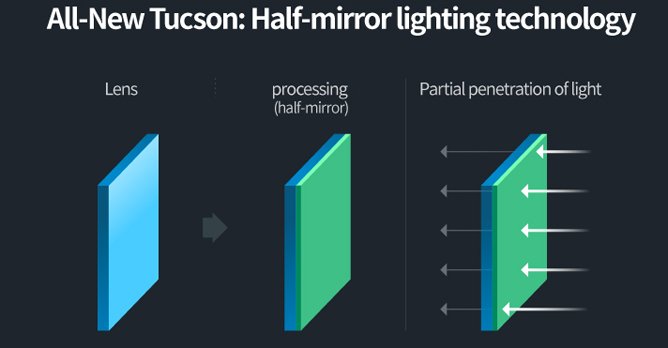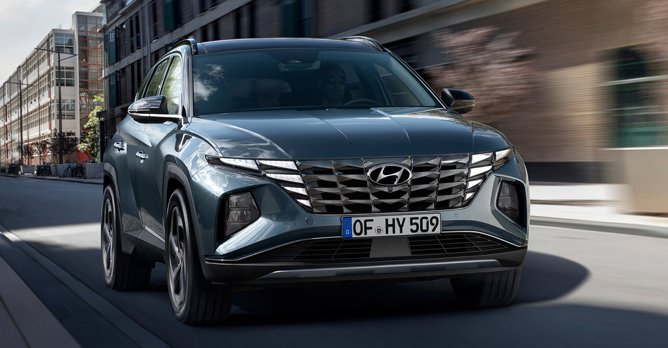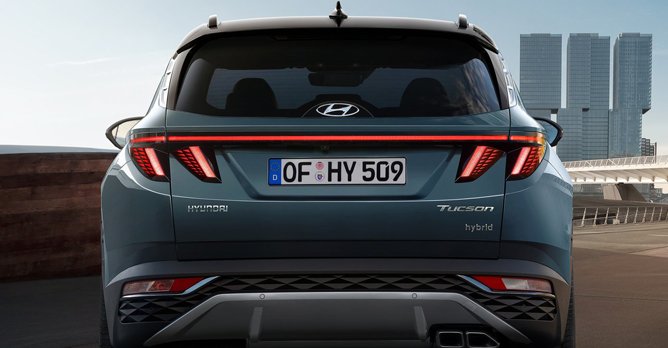Hyundai reveals insights about the Tuscon's signature Hidden Lighting Technology
30 Dec 2020|1,439 views
Most concept cars designed by automakers stand out due to their vivid, high-tech designs. However, most of these models do not go on to enter mass production. The Tucson, on the other hand, bears an almost identical look to Hyundai's Vision T SUV Concept.
The most distinctive feature of the Tucson is that it perfectly reproduces the bold and futuristic frontal design of the Vision T Concept. When its lights are switched off, the front of the vehicle appears covered in dark, geometric patterns, with no distinction between the grille and the seamlessly integrated LED Daytime Running Lights (DRL).

As the new construction method was applied, Hyundai's engineers proceeded by verifying their reliability and made improvements accordingly. By setting up harsh virtual environmental conditions by varying the heat sources inside and outside of the lamps, they were able to test for cracks and for heat expansion.
The engineers applied nickel-chrome materials to provide heat resistance, while using subtle dark chromium colours in the radiator grille to ensure both durability and shade. As a result, the Tucson's Hidden Lights can withstand complex environmental conditions.
Adding materials to the LED lamp's lens naturally reduces light penetration, reducing efficiency. It was therefore necessary to reinforce the brightness of the lights in order to adhere to safety standards. Hyundai increased the power and number of LED units in order to increase the brightness so that it exceeded the required level, even after applying the nickel-chrome coating.

This means they look exactly like the radiator grille when switched off, and also serve as the DRLs and direction indicator lights while switched on.
The Tucson's designers also applied Hidden Lighting technology to its tail lamps. These appear as triangular parts arranged on either side of the taillights and stretch horizontally. The grey translucent lenses partially block out light from the outside when the lights are switched off.
When the LED lights are switched on, the light curtain lens spreads the light widely and evenly, completing the intense look that appears as if the triangles spread their 'wings' together. However, the implementation method differed from that of the DRLs, which used the half-mirror technology. The outer lens of the tail lamp was processed through the use of both a translucent lens and a black lens with a relatively low penetration rate.

Hyundai intends apply its Hidden Lighting and half-mirror LED technology to more models in the future, with the expectation that its future self-driving vehicles will be able to send information directly through their lamps to surrounding vehicles and pedestrians alike.
Most concept cars designed by automakers stand out due to their vivid, high-tech designs. However, most of these models do not go on to enter mass production. The Tucson, on the other hand, bears an almost identical look to Hyundai's Vision T SUV Concept.
The most distinctive feature of the Tucson is that it perfectly reproduces the bold and futuristic frontal design of the Vision T Concept. When its lights are switched off, the front of the vehicle appears covered in dark, geometric patterns, with no distinction between the grille and the seamlessly integrated LED Daytime Running Lights (DRL).

As the new construction method was applied, Hyundai's engineers proceeded by verifying their reliability and made improvements accordingly. By setting up harsh virtual environmental conditions by varying the heat sources inside and outside of the lamps, they were able to test for cracks and for heat expansion.
The engineers applied nickel-chrome materials to provide heat resistance, while using subtle dark chromium colours in the radiator grille to ensure both durability and shade. As a result, the Tucson's Hidden Lights can withstand complex environmental conditions.
Adding materials to the LED lamp's lens naturally reduces light penetration, reducing efficiency. It was therefore necessary to reinforce the brightness of the lights in order to adhere to safety standards. Hyundai increased the power and number of LED units in order to increase the brightness so that it exceeded the required level, even after applying the nickel-chrome coating.

This means they look exactly like the radiator grille when switched off, and also serve as the DRLs and direction indicator lights while switched on.
The Tucson's designers also applied Hidden Lighting technology to its tail lamps. These appear as triangular parts arranged on either side of the taillights and stretch horizontally. The grey translucent lenses partially block out light from the outside when the lights are switched off.
When the LED lights are switched on, the light curtain lens spreads the light widely and evenly, completing the intense look that appears as if the triangles spread their 'wings' together. However, the implementation method differed from that of the DRLs, which used the half-mirror technology. The outer lens of the tail lamp was processed through the use of both a translucent lens and a black lens with a relatively low penetration rate.

Hyundai intends apply its Hidden Lighting and half-mirror LED technology to more models in the future, with the expectation that its future self-driving vehicles will be able to send information directly through their lamps to surrounding vehicles and pedestrians alike.
Latest COE Prices
July 2025 | 2nd BIDDING
NEXT TENDER: 06 Aug 2025
CAT A$101,102
CAT B$119,101
CAT C$68,600
CAT E$120,000
View Full Results Thank You For Your Subscription.





















